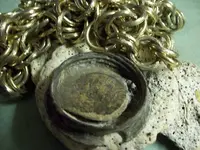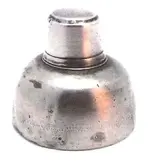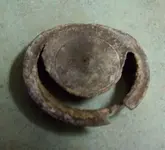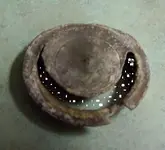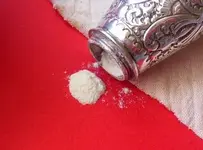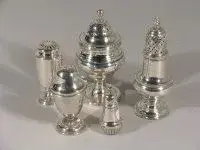I know I said more than once that "this is the last one," but I was just sharing all of this stuff with my 32 year old daughter, and I promised her I would tell everyone that she thinks I'm crazy and on the wrong track with the "pounce pot" theory. Of course she doesn't have a clue what the lid went to, but suspects it may not have had holes in it at all originally, and that the 'slot' is where it just happened to corrode away. She may be right and I may be wrong. I will concede that. Who can say for certain whether it originally had holes in it or not?
But just in case someone wishes to take sides with me and prove my daughter wrong, I present this final bit of evidence and invite you to do some additional searching. And if you agree with my daughter and think I'm crazy, that's okay too because I have been called worse.
I apologize for the small picture below, but that's the way it came and I was unable to enlarge it. The following text was with the picture. Plus, I likely won't be back until such time as I can find a positive connection between the threaded lid and the "whatever" it went to.

SBB
[Text w/picture]
A collection of five silver pepperettes and pounce pots, to include; a pedestal pounce pot, William Bateman, London 1822, with ball finial, 12cm high, weight 3oz. A silver caster London 1767, of baluster form, with pierced cover and flame finial, initialled to base 'S S*P' 12cm high, weight 2oz. A silver pedestal pounce pot, London 1810, Rebecca Emes & Edward Barnard. And two silver pepperettes, London 1898, 8cm high and Birmingham 1912, 6cm high.



